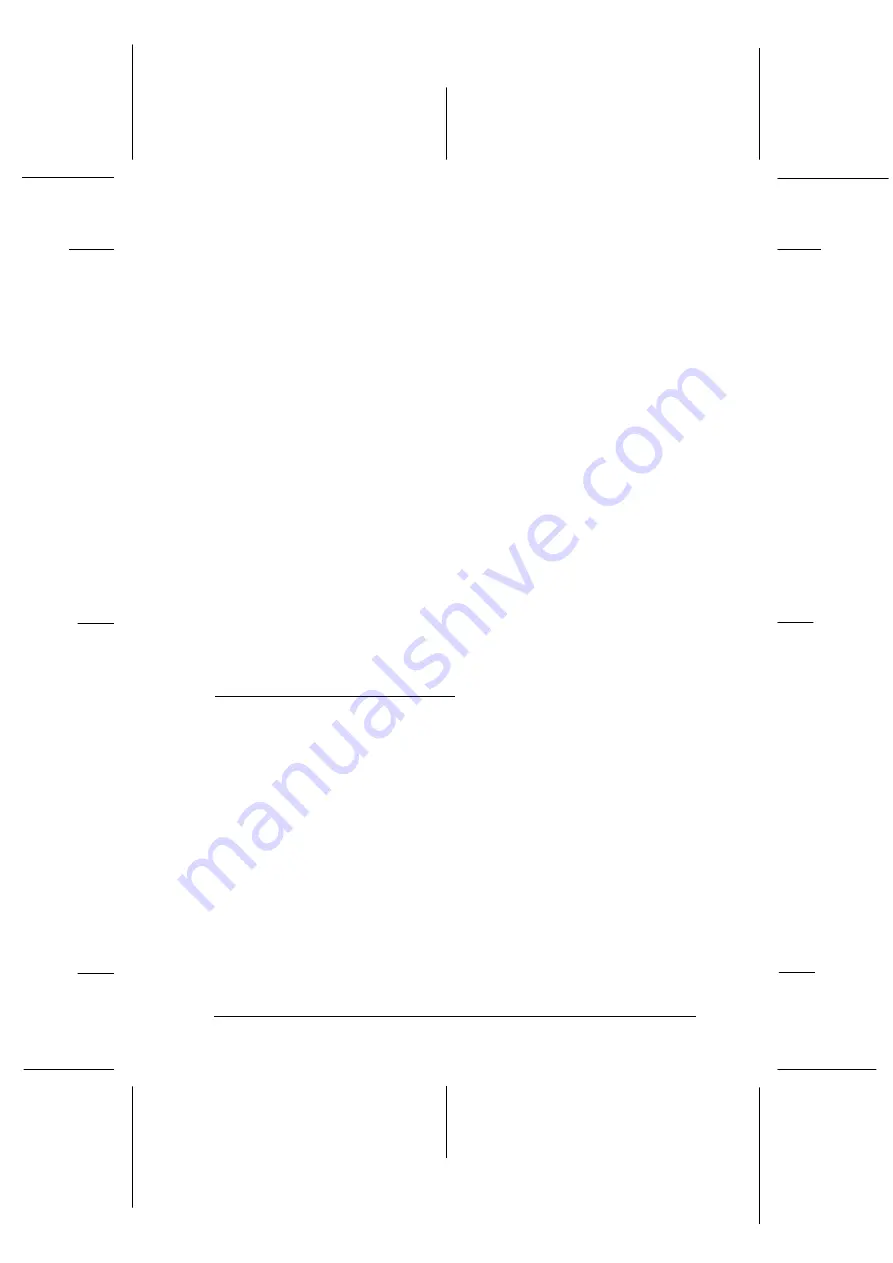
8.
To separate the incoming paper from the printed paper, attach
the paper guide. Hold it horizontally and fit its notches over
the printer’s mounting posts. Then slide the paper guide
toward the back of the printer until you feel it click.
9.
Slide the left edge guide to the center until it stops at the guide
mark; slide the right edge guide to the opposite guide mark.
10. Attach the printer cover and adjust the paper position with the
paper-feed knob. Turn the knob until the perforation between
pages is just above the print head. Then turn on the printer.
11. Make sure the printer cover is closed. When the printer
receives data, it begins printing automatically.
If you want to change the position where printing begins on the
page, press
LF/FF
to advance the page to the next top-of-form
position, and then follow the steps on page 2-5 to adjust the
loading position.
To eject the paper, tear off the paper entering the printer; then
press the
LF/FF
button to feed the paper forward.
Printing on Special Paper
In addition to printing on single sheets and continuous forms,
your printer can also print on a wide variety of paper types,
including multi-part forms, labels, and envelopes.
Before printing on special paper, you need to change the paper
thickness setting.
c
Caution:
When printing on multi-part forms, thicker-than-normal paper,
labels, or envelopes, make sure your software program settings
keep the printing entirely within the printable area. Printing
past the edge of these papers can damage the print head.
R
Blueberry REV.F
A5 size
Chapter 2
95/05/25
Using the Printer
2-15
















































